
Dates: July 23, 2007 - August 2, 2007
Location: Bocas Research Station, Bocas del Toro, Panama
Organizer: Dr. Rachel Collin, STRI
Registration Fee: $250 (STRI registration, room and board at the station is included). Need-based travel fellowships will be available.
Instructors:
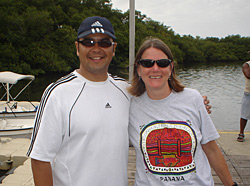
Dr. Mary Alice Coffroth
State University of New York at Buffalo
![]()
Dr. Juan A. Sanchez
Universidad de los Andes
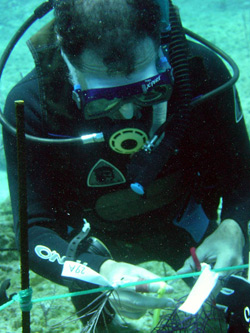
Dr. Howard Lasker
State University of New York at Buffalo
![]()
Dr. Dennis Opresko
Oak Ridge National Laboratory
Course description:
Diving will be a required component of the course.
The course is aimed at graduate students, post-docs, or professionals who are interested in learning and applying knowledge about the diversity and ecology of Caribbean Gorgonians and Black Corals. An additional aim is to standardize the taxonomic treatment of gorgonians throughout the region, and to foster a network of interested gorgonian workers with participants of the Cnidarian Tree of Life and the DNA barcoding initiatives. The students participating in this course will:
- Learn to describe and identify Caribbean Gorgonians and Black Corals.
- Learn general biological and ecological characteristics of the group.
- Assist in developing species lists, keys and ID guides for the Bocas fauna.
- Learn the most recent advances in gorgonian phylogenetics and systematics.
- Participate in the initiative to develop DNA barcodes for the reefs of Bocas del Toro.
- Conduct short independent projects.
Application Procedure
This course is directed towards graduate students and advance Licenciado candidates and will be conducted in English. Please e-mail your CV, 1 letter of recommendation, and a 1-2 page statement explaining your background and reasons for taking the course, to Rachel Collin at CollinR@si.edu before March 1, 2007. Limit 12 students. To be considered for a need-based fellowship, applicants should send a description of their need and their efforts to obtain funding for available sources. For more information see Taxonomy Training
Participants:

Nelson Manrique R.
I am currently a master student at the Universidad de Los Andes as an assistant researcher in BIOMMAR (Molecular Marine Biology Laboratory; Director: J.A. Sánchez). I have been working in coral reefs monitoring since 2000 with the UJTL and Marine and Coastal Researches Institute INVEMAR. My honours thesis was on population ecology and conservation of threatened octocorals in the Colombian Caribbean. I have published two papers about this research and have presented this research in an international meeting (10th ICRS Japan, 2004). Now, I am part of the NOAA-coral grant “Assessment of management effectiveness for the Marine Protected Areas at the ‘Rosario and San Bernardo Corals National Park’ (Cartagena): towards an adaptive management of Colombia’s first coral reef protected area” and the project sponsored by COLCIENCIAS “Sustainable use of coral reef resources and economic valuation of the Corales del Rosario y San Bernardo (PNN-CRSB) National Natural Park”. My research interests are about conservation biology, marine protected areas, restoration and mechanisms of maintenance and genomic repair in octocorals. We have a website where you can learn more in Biommar
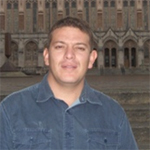
Carlos Andres Prada M.
I am interested in the ecology and evolution of marine invertebrates. As part of my research I evaluate the morphological variation in natural populations of the gorgonian Plexaura flexuosa, inhabiting reefs spanning different physical gradients. I study up to what extent such phenotypic plasticity is environmentally or genetically induced. I evaluate the fitness of such different forms in dissimilar habitats and the speciation process in gorgonians. As a result of this research I have started to analyze how taxonomic uncertainties can interfere with population genetic studies. I am also interested in the evolution of self/non-self systems in clonal taxa. Some of my current research questions are: Are genes involved in histocompatibility under constant selection? Is the evolution of these genes different in branching than in encrusting forms of clonal taxa, regarding the rate of evolution? Are branching forms more likely to fuse with non-relatives due to a lack of selective force shaping the self-recognition? Clonal reef organisms are highly diverse and broadly distributed yet speciation is uncertain and its mechanisms largely unknown. I am interested in the role of disruptive selection and hybridization in promoting diversity of reef organisms.
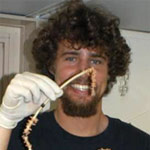
Mercer Brugler
My dissertation involves a genetic examination of both shallow-water and deep-sea black corals (antipatharians). With the recent publication of the complete mitochondrial (mt) genome of Chrysopathes formosa (Mol. Phylogenet. Evol. 42: 776-788), we now have primer sets to target two large intergenic spacers and the cox1 “barcode of life.” These three regions are being amplified across the Antipatharia to determine the level of genetic variation that exists in the black coral mt genome. Anthozoans studied to date have shown little mt variation; however, variability has not been properly quantified within the Antipatharia. Using these sequences, in addition to nuclear encoded ITS1, I am building a phylogeny of the Antipatharia in an effort to better understand the relationships of the 7 currently recognized families and their respective genera (n=40). I am also searching for and testing several anonymous nuclear gene sequences for their utility in a number of projects, which include determining: i) whether the wide range of morphological variability within the genus Tanacetipathes has a genetic basis or is environmentally induced; ii) population structure of Antipathes curvata (formerly A. dichotoma) from Hawaiian Island slopes; and iii) structure of Parantipathes hirondelle from deep seamounts in the western North Atlantic Ocean. While I would call myself a black coral fanatic, I also work on deep-sea bamboo corals. In fact, I just sequenced two bamboo coral mt genomes (Isidella sp. and Acanella eburnea) and encountered some very interesting results (manuscripts in prep). If you are interesting in learning more about the research conducted in Scott France’s laboratory, I encourage you to visit the following website.

Raphael Ritson-W
I am currently working as a technician in the field of marine chemical ecology at the Smithsonian Marine Station in Fort Pierce. My research interests include coral reef biodiversity and natural product diversity especially those compounds that influence evolution and ecology. Recent research projects include the feeding ecology of coral reef herbivores and predators, chemical and aposematic defenses in nudibranchs, the function of tetrodotoxin in marine flatworms, shallow water gorgonian diversity, chemical richness in deep sea gorgonians, cyanobacteria chemical ecology, coral and macroalgae/cyanobacteria allelopathic interactions, and chemical cues for larval settlement and metamorphosis.

Jana Thoma
University of Louisiana-Lafayette. USA The goal of my research is to elucidate the evolutionary relationships of selected deep-sea Octocorallia, and in particular species within the genus Paramuricea and family Acanthogorgiidae, using molecular phylogenetic analyses. I will also incorporate knowledge of the organisms’ morphology and ecology to better understand their evolutionary history.

Daniel Wagner
Black coral is the official gemstone for the State of Hawaii, and the black coral fishery supports a $30 million state-wide industry. Unlike many other commercial fisheries, the Hawaiian black coral fishery has enjoyed a long and continuous history of sustainable management since its inception in 1958. The commercially valuable black coral species Antipathes dichotoma and Antipathes grandis have been harvested in Hawaii since the late 1950’s. Deep water surveys in Hawaii performed between 2001-2004, suggest that the abundance of large black coral colonies has recently declined both in shallow (70 m) water. Likely causes of this decline include both overgrowth by an invasive octocoral (Carijoa sp.) and recent increases in harvesting pressure. Together, these factors have renewed scrutiny on the black coral fishery and raised questions about whether regulations need to be redefined in order to maintain a sustainable harvest. More research is needed on the biology of black corals, particularly its reproduction biology, in order to develop effective management regulations. I hope to address some of these issues as part of my thesis research at the University of Hawaii.
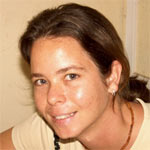
Patricia Gonzalez
Professor and Researcher at Marine Research Center of Havana University. Member of Marine Ecology group. Research fields: *Community, population and individual level indicators in ecological research of sponges, gorgonians and corals. *Detection of land pollution based on coral reefs.

Branwen Williams
My research will develop alcyonaceans and antipatharians as proxy organisms for thermocline depth in the western tropical Pacific.These organisms have the potential to record changes in oceanography in the stable isotopic composition of their skeleton as it is formed over time. I will use δ15N and δ13C measurements from the skeleton of specimens to determine their location above or below the thermocline in the western tropical Pacific, and develop a record of thermocline depth variability. I will also explore the natural variability of the stable isotopic signature of these organisms.

Anabella Z, Montero
My doctoral dissertation is about Aspergillosis in Gorgonia ventalina. In my research, I am working with the prevalence and incidence of the disease in sea fans. On the other hand I am working with molecular tools in the comparison of fungal community between sea fans and seawater and other terrestrial sources and in the phylogenetic relationship among strains of A. sydowii.
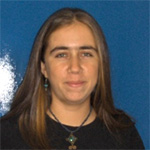
Isabel Chacon
Cnidarians, particularly Gorgonians are interesting to me, since there have not much done in my country about them, even being one of the most biodiverse countries. Therefore I want to learn more about them to generate relevant projects and strategies to reveal all the implications they have for the marine ecosystems here and to develop conservation policies which include them.

Maia Mukherjee
I am currently conducting a comparative study of secondary metabolite chemistry of organisms of the genus Pseudopterogorgia. I am looking for variation in secondary metabolite chemistry across geographic and seasonal gradients. I am also attempting to link chemical profiles to taxonomic identification. Additionally I am interested in the ecological roles of the secondary metabolites from these organisms.

Federica Fava
My main research interests regard Octocorals taxonomy, biology and ecology. These interests started with my M. Sc. degree thesis on Mediterranean gorgonians during which I studied the survival and growth of four Mediterranean gorgonians species fragments (Eunicella singularis, E. cavolinii, E. verrucosa and Paramuricea clavata) transplanted in natural environment. The aim of this project was to evaluate the resistance and the resilience of these species towards sea warming and to estimate if the transplants methods could be used in the restoration of areas affected by mass mortality events. Through my collaboration at the Department for the study of the Territory and of its Resources (DIPTERIS, University of Genoa, Dr. Carlo Cerrano), I also worked on Indo-Pacific soft corals and sea fans; I classified and collected the main genera of gorgonians present in the Bunaken National Marine Park (North Sulawesi) and I carried out a project about the patterns of soft corals distribution around Siladen Island, Bunaken National Marine Park. Now I have a fellowship at the Centre for Environmental Science of the University of Bologna to study the epibenthic assemblages in the north Adriatic Sea.

Herman Wirshing
I am interested in the molecular systematics of octocorals and scleractinian corals. Primarily, I hope to utilize novel genetic markers to elucidate evolutionary relationships at higher (Order) to middle (Family) taxonomic levels among gorgonians. I am also interested in the phylogeography and species level relationships among the shallow-water Caribbean gorgonians.

Peter Etnoyer
I am interested in gorgonian corals as habitat in the shallow and deep seas, as well as the environmental factors that support gorgonian settlement and growth. My dissertation research examines the diversity and distribution of deep-water gorgonians in the Gulf of Mexico, with special emphasis on the banks of the Flower Garden Banks region. I an trying to get a handle on gorgonian distribution in general. I use a lot of GIS and ROV in my research, rather than genetics, but I look forward to learning more in this course at STRI. So far, I have only used morphological techniques to identify and describe species. I like the bamboo corals in particular, but have also been lucky to work with the primnoid octocorals in the Gulf of Mexico, Gulf of Alaska, and the US west coast. I live in Corpus Christi, TX with my wife and two daughters
Supported by a grant from the
Smithsonian Institution’s Marine Science Network and SENACYT
Course materials
















